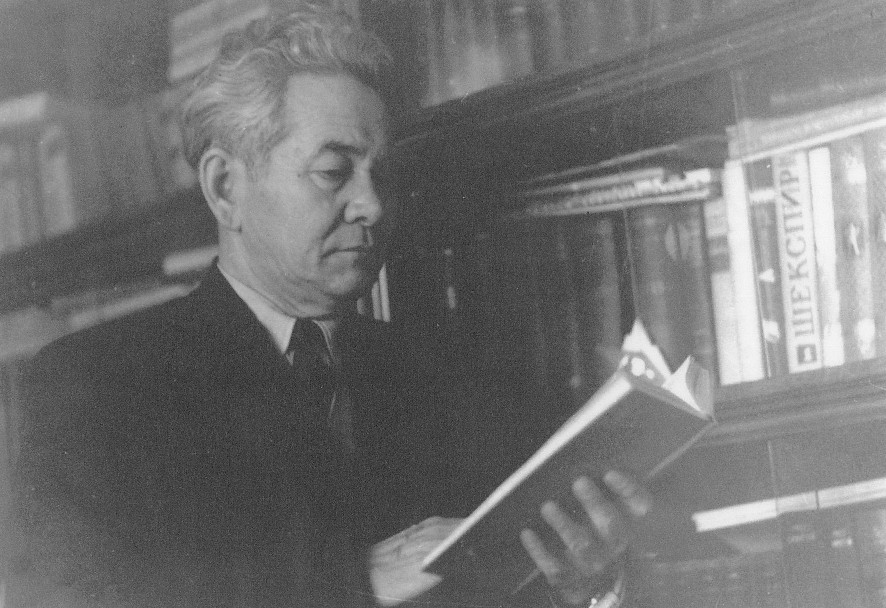AKHMET ZHUBANOV
Akhmet Kuanovich Zhubanov (kaz. Zhubanov Akhmet Қuanuly; 1906-1968) – soviet musicologist, composer, conductor, people’s artist of the Kazakh SSR (1944), academician of the Academy of Sciences of the Kazakh SSR (1946), professor (1948). The younger brother of the Soviet Kazakhstani philologist, Turkologist and Professor Kudaibergen Zhubanov.
He was born on April 29, 1906 in the tract Kosuaktam, now Aktobe region. He died on May 30, 1968 in Alma-Ata.
In 1932 he graduated from the historical and theoretical faculty of the Leningrad Conservatory.
In 1934 he created the Kazakh State Academic Orchestra of Folk Instruments named after Kurmangazy and was his conductor until 1945. 1935-1937 – artistic director of the Jambul Philharmonic.
Since 1961, he headed the department of musical art at the Auezov Institute of Literature and Art.
Author of books, essays and articles about Kazakh folk music.
Composer Akhmet Kuanovich Zhubanov is an original and brightly national artist. He went all the way to the academician, people’s artist of the Kazakh SSR. “A blade of grass will not grow on barren takir,” Kazakhs say. These words can be fully attributed to professional music, which is born and develops on the basis of folk.
The father of the future composer Kuan was an enlightened man in the aul. In addition, communicating with Russian peasants from Voronezh, Kursk, Tambov, Kharkov, who since 1870 began to settle for permanent residence near Aktyubinsk, he learned to speak and read Russian. Zhubanov’s father dreamed of educating his children. A lot of effort was put to open a school in his aul, where he took the seven-year-old Akhmet. In 1918, Zhubanov graduated from a two-year Russian school in Zhuryn and then, after studying at teacher training courses, he worked in the city of Temir. But for a minute the young man does not forget about music, independently studies the theory and musical literacy, plays in the amateur orchestra of folk instruments.
The years spent by Zhubanov in Aktyubinsk were especially important in his life. Here he learns to play the violin with the exiled music teacher from Voskresensk Petr Georgievich Chernyuk.
The book of A. V. Zataevich “1000 songs of the Kazakh people” made a great impression on Zhubanov. “I learned a lot of kinds of legends about the songs compiled by Zataevich, and about a man who knew how to read these mouse-like traces, inscriptions of sounds and was eager to become the same specialist in the field of music as Zataevich. Chernyuk warmly and sincerely supported this aspiration of mine. My acquaintance with A.V. Zataevich through his collection of Kazakh songs by ninety percent decided the direction of my future fate ”, the composer later recalled.
In 1928, Ahmet became a student of the music technical school named after M.I. Glinka in Leningrad, where he is engaged in the violin class with an experienced teacher A.A. Etigon. The time for intensive study began, but the young man was not limited only to the program of the secondary school, making a lot of efforts in order to enter the conservatory.
In 1932, Zhubanov became a graduate student at the Academy of Art Studies in Leningrad, and a year later the People’s Commissariat of Kazakhstan was recalled to work in Alma-Ata. All his subsequent creative life turned out to be closely connected with the origin, formation and development of new forms of musical culture in Kazakhstan. Organizational and pedagogical activity of Zhubanov began in the 30s, when the first music educational institution, the Music and Drama College, opened in the republic. At the initiative of Zhubanov, a scientific office was organized with him, as well as an experimental workshop for improving folk instruments. E. Brusilovsky from Leningrad, L. Mukhitov from the Ural region, M. Bukeikhanov from Kyzyl-Orda, brothers Romanenko, and others, were invited to work here.
At the technical school Zhubanov created a student ensemble of dombrists, who at the First All-Kazakhstan rally of folk talents in 1934 demonstrated his art. Soon, the Presidium of the Kazakh Central Executive Committee adopted a resolution on the creation of an orchestra of Kazakh national instruments based on the dombra ensemble. Thus was born the world-famous Kazakh State Orchestra of Folk Instruments named after Kurmangazy, whose conductor and artistic director was appointed Akhmet Zhubanov.
The composer activity of Zhubanov in the years 1938-40 developed in two directions – he was engaged in the processing of folk songs and kuys and wrote his works. In 1939 he created music for the play by G. M. Musrepov “Qozy-Corpesh – Bayan-Sulu”. Together with composer M. F. Gnesin, he worked on the music for the film Amangeldy. Then he composed music for the dramatic performances of M. Akynzhanov “Isatay-Makhambet”, M. O. Auezov “Abai”. One of the significant creations of these years is the musical play “Sarah” about the life and work of the folk composer.
It is enough to try to only imagine the whole creative life of Akhmet Zhubanov, how involuntarily he embraces the surprise of his colossal capacity for hard work. He has written hundreds of research papers, articles, and artistic essays on national musical culture. Such works by Zhubanov as “Strings of Centuries”, “Nightingales of Centuries”, “Kurmangazy”, “Life and Work of Kazakh Folk Composers”, “Musical Culture of the Kazakh People”, “An kyu sapary” (“Journey through Songs and Kyus”) we can meet in the home library of any researcher who is interested in folk music issues. The works of Zhubanov have long become a necessary source for literary work. Akhmet Zhubanov, who zealously guarded the heritage of folk music, until the very last day of his life did not stop for a moment to think about its fate, the fate of music, which became the ideal of his life. He was buried in the central cemetery of the city of Almaty.

